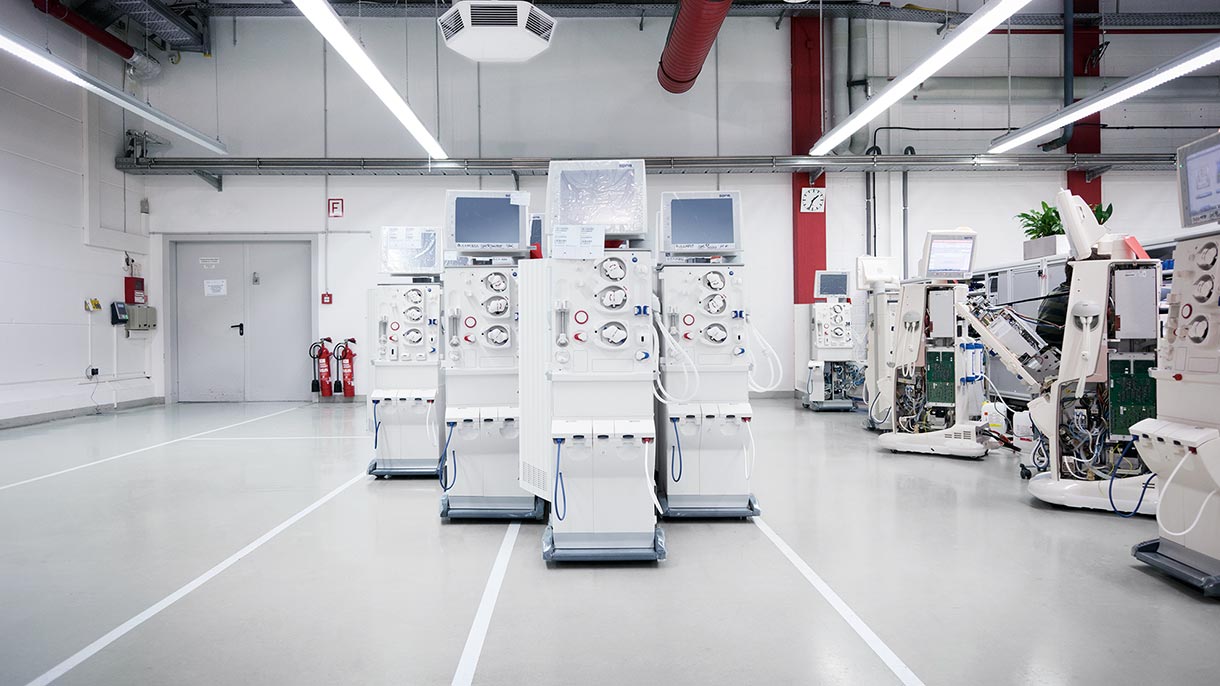A successful series-produced model
More than half of dialysis machines used worldwide are made by Fresenius Medical Care

The history of the modern dialysis machine started in the 1970s with a question: How to turn a highly specialized treatment, available to only a few people at the time, into a series-produced lifesaver? The question became a vision. And the vision became a success story that today has 8,000 parts. That’s how many components are inside a modern Fresenius Medical Care dialysis machine.
The very first model became the world’s bestselling dialysis machine of its time. Since then, the Company has expanded its lead with its follow-up models: In recent years, Fresenius Medical Care has sold around five times more dialysis machines worldwide than its nearest competitor. From the very beginning, the prime objective in developing dialysis machines was to make therapy safe, gentle and affordable for as many patients as possible. When Fresenius Medical Care started serial production of the first devices in 1979, the treatment was available to fewer than 10,000 patients worldwide. More than two million people in the world now undergo dialysis treatment; approximately one in two are treated with a product developed and produced by Fresenius Medical Care.

Key functions of the dialysis machine
The dialysis machine pumps the blood from the patient’s body through a bloodline system to the dialyzer, also called the artificial kidney. In the course of a treatment session lasting some four to five hours, up to 120 liters of blood are pumped through the tubes – that’s several times a patient’s total blood volume. In the dialyzer, a dialysis fluid absorbs the toxins and excess water filtered out of the blood and removes them via a separate cycle. At the same time, the machine dispenses and administers drugs to prevent blood coagulation and collects data during treatment, from blood pressure to the temperature of the dialysate. The machine’s safety features have also been continuously enhanced and automated: The machine now recognizes changes in the patient’s bodily functions during dialysis. The same applies to technical problems: If a tube leaks or if the hydraulics no longer function smoothly in a particular area, the fault is immediately displayed on the monitor and treatment is automatically interrupted.

Fully automated to the leading manufacturer of dialysis machines
Fresenius Medical Care’s production sites have also progressed steadily. Whereas the Schweinfurt factory produced precisely 36 machines in 1979, it now makes several tens of thousands. This is thanks to a large number of fully automated production steps, for example in the manufacture of highly sensitive solenoid valves, a key component of the hydraulic circuit. Fresenius Medical Care now not only produces dialysis machines in Schweinfurt, but also specifically for the North American market at its sister factory in Concord, California.

Dialysis machines of the future: compact and mobile
The overriding objective is still to make sure that one day, every person who needs dialysis treatment will get it. What started off as a vision is now a series-produced success. Whereas it took us just over three decades to build the first 500,000 dialysis machines, the latest forecasts suggest that the 1,000,000th machine will be delivered as soon as 2020.

